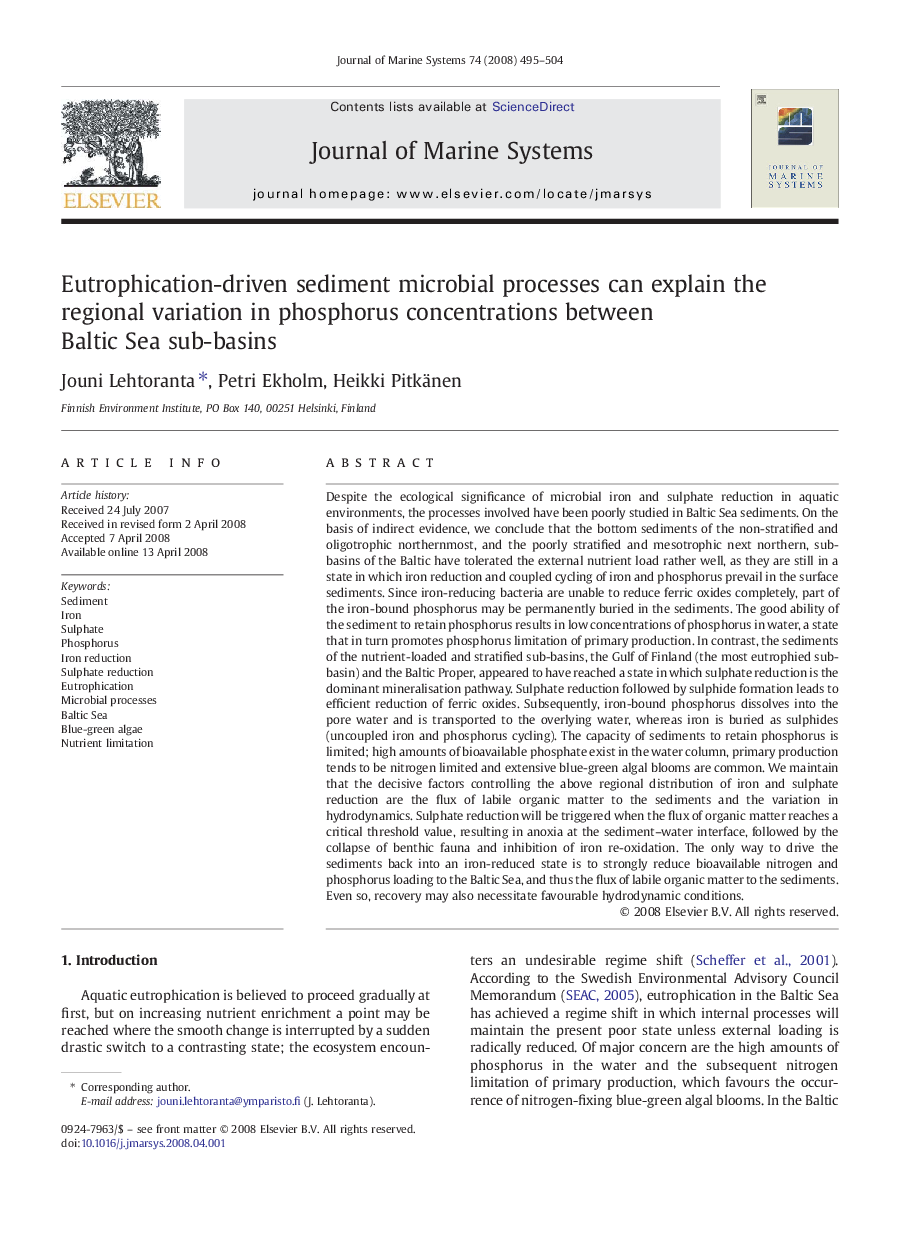| کد مقاله | کد نشریه | سال انتشار | مقاله انگلیسی | نسخه تمام متن |
|---|---|---|---|---|
| 4549016 | 1627343 | 2008 | 10 صفحه PDF | دانلود رایگان |

Despite the ecological significance of microbial iron and sulphate reduction in aquatic environments, the processes involved have been poorly studied in Baltic Sea sediments. On the basis of indirect evidence, we conclude that the bottom sediments of the non-stratified and oligotrophic northernmost, and the poorly stratified and mesotrophic next northern, sub-basins of the Baltic have tolerated the external nutrient load rather well, as they are still in a state in which iron reduction and coupled cycling of iron and phosphorus prevail in the surface sediments. Since iron-reducing bacteria are unable to reduce ferric oxides completely, part of the iron-bound phosphorus may be permanently buried in the sediments. The good ability of the sediment to retain phosphorus results in low concentrations of phosphorus in water, a state that in turn promotes phosphorus limitation of primary production. In contrast, the sediments of the nutrient-loaded and stratified sub-basins, the Gulf of Finland (the most eutrophied sub-basin) and the Baltic Proper, appeared to have reached a state in which sulphate reduction is the dominant mineralisation pathway. Sulphate reduction followed by sulphide formation leads to efficient reduction of ferric oxides. Subsequently, iron-bound phosphorus dissolves into the pore water and is transported to the overlying water, whereas iron is buried as sulphides (uncoupled iron and phosphorus cycling). The capacity of sediments to retain phosphorus is limited; high amounts of bioavailable phosphate exist in the water column, primary production tends to be nitrogen limited and extensive blue-green algal blooms are common. We maintain that the decisive factors controlling the above regional distribution of iron and sulphate reduction are the flux of labile organic matter to the sediments and the variation in hydrodynamics. Sulphate reduction will be triggered when the flux of organic matter reaches a critical threshold value, resulting in anoxia at the sediment–water interface, followed by the collapse of benthic fauna and inhibition of iron re-oxidation. The only way to drive the sediments back into an iron-reduced state is to strongly reduce bioavailable nitrogen and phosphorus loading to the Baltic Sea, and thus the flux of labile organic matter to the sediments. Even so, recovery may also necessitate favourable hydrodynamic conditions.
Journal: Journal of Marine Systems - Volume 74, Issues 1–2, November 2008, Pages 495–504